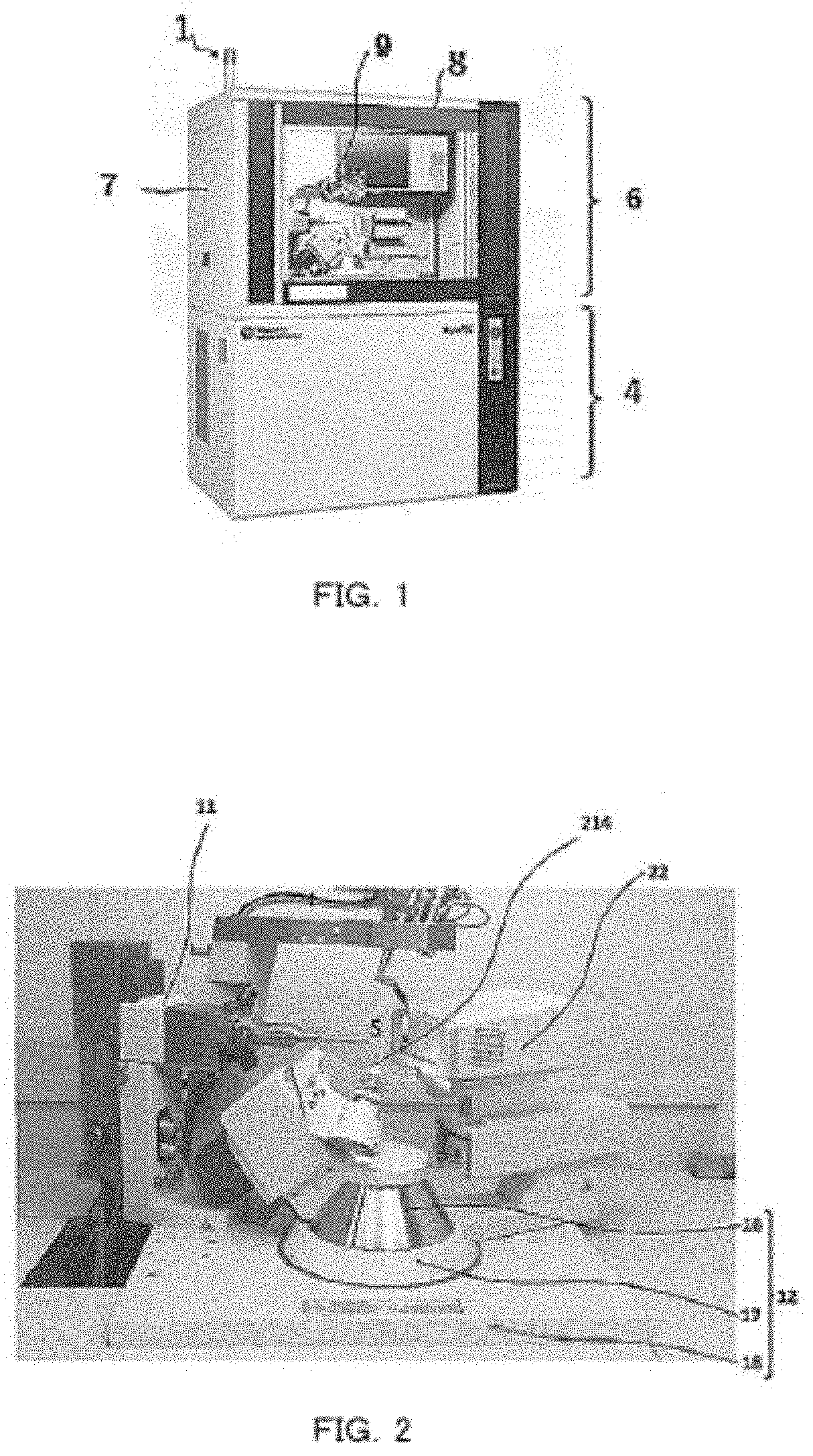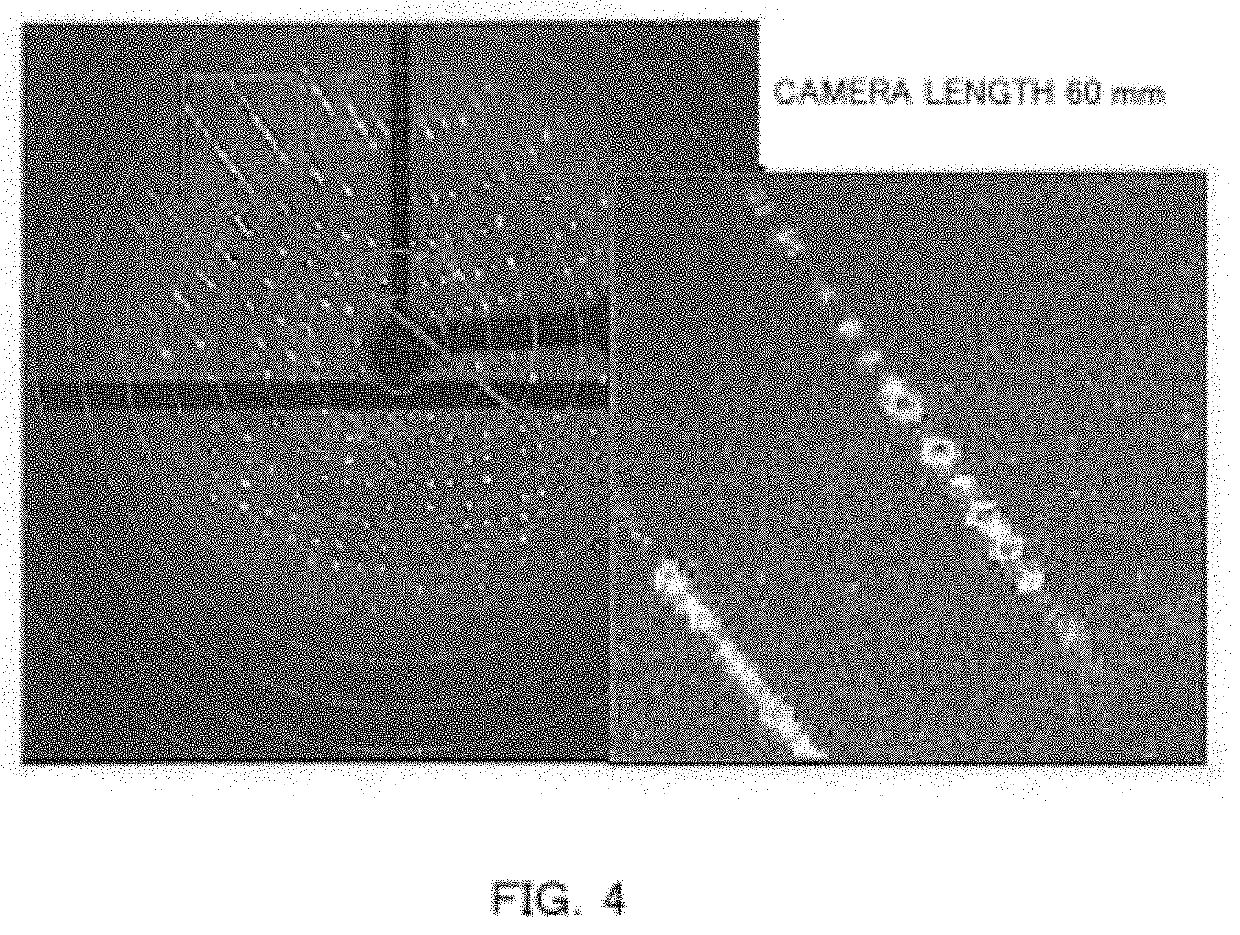Sample holder unit for single-crystal x-ray structure analysis apparatus
- Summary
- Abstract
- Description
- Claims
- Application Information
AI Technical Summary
Benefits of technology
Problems solved by technology
Method used
Image
Examples
example 1
[0066]FIG. 8 shows a sectional view of the sample holder 214 according to Example 1. The sample holder 214 comprises a disk-shaped base part 201 made of metal or the like, attached to the goniometer head (Refer to FIG. 7A) at the tip of the goniometer 12, and a protrusion part 202 formed in a protrusion shape extending downward from one surface thereof (the lower surface in the figure). The protrusion part 202 comprises s conical part 202a, and a sample holding part (corresponding to the so-called goniometer head pin) 202b formed in a protrusion shape. The crystalline sponge 200 in which the above-described sample to be analyzed is soaked is combinedly attached to the sample holder 214 beforehand at a predetermined position of the tip of the sample holding part 202b.
[0067]Further, an attachment part 203 in a recessed truncated cone shape is formed on the other surface (upper surface in the figure) of the base part 201, and a magnet that is not shown in the figure or a projected eng...
example 2
[0084]FIG. 16 is a perspective view showing the applicator 500 of Example 2, according to the present invention; FIG. 17 shows a cross-section of a sample holder unit according to the same; and the same symbols are given the same portions as those in Example 1. Symbol 501 represents a plate-shaped pull-out prevention part (sliding part) that protrudes toward the opening 302 by sliding in the lateral direction along an opening surface 509 of the applicator 500. The pull-out prevention part 501 is engaged with the upper surface of the sample holder 214 stored in the applicator 500 in an attached state thereof, and prevents the sample holder 214 from being pulled out from the opening 302. Symbols 504 and 504 represent guide rails each whose cross-section is U-shaped, the guide rails are arranged so as to extend in parallel at both side portions of the opening surface 509. The pull-out prevention part 501 whose both side ends (engagement parts) are engaged with the guide rails 504 and 5...
example 3
[0091]FIG. 19 is a perspective view in which a sample holder unit 400 is shown with a partial cross-section according to Example 3 of the present invention, and the same symbols are given the same portions as those in Example 2. FIG. 19 shows a state of attachment thereof into an applicator by the pull-out prevention part 701, and it is omitted to show a U-shaped opening part (Refer to symbol 502 in FIG. 16) of a pull-out prevention part according to Example 2.
[0092]Symbol 700 represents an applicator, and symbol 701 represents a pull-out prevention part (sliding part) for sliding an opening (that is not shown in the figure) of the applicator 700, that is formed of a resin or the like in plate thickness exhibiting high mechanical strength (about 10 atmospheric pressure). Symbols 704 and 704 representing a pair of guide rails arranged in parallel so as to extend in the lateral direction at both side portions above the applicator 700 exhibit high mechanical strength, the guide rails e...
PUM
 Login to View More
Login to View More Abstract
Description
Claims
Application Information
 Login to View More
Login to View More - R&D
- Intellectual Property
- Life Sciences
- Materials
- Tech Scout
- Unparalleled Data Quality
- Higher Quality Content
- 60% Fewer Hallucinations
Browse by: Latest US Patents, China's latest patents, Technical Efficacy Thesaurus, Application Domain, Technology Topic, Popular Technical Reports.
© 2025 PatSnap. All rights reserved.Legal|Privacy policy|Modern Slavery Act Transparency Statement|Sitemap|About US| Contact US: help@patsnap.com



